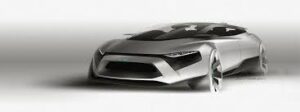Maintaining the proper level and quality of oil in your car’s engine is crucial for its overall health and performance.
Regularly changing the oil helps to remove contaminants and keep the engine running smoothly. In this article, we will provide tips on how to change the engine oil in your car.
Whether you are a seasoned mechanic or a car owner looking to do some basic maintenance, these tips will help you ensure that the job is done safely and correctly.

By following these steps, you can help prolong the life of your car’s engine and keep it running at its best.
- First, check your owner’s manual to determine the type and amount of oil recommended for your specific vehicle.
Before you start changing the oil in your car, it is important to make sure you have the right type and amount of oil for your specific vehicle. The owner’s manual should have this information, so be sure to consult it before proceeding. Using the wrong type of oil or not using enough oil can cause serious damage to your engine.
- Locate the oil filter and oil drain plug under the car. You may need a jack and jack stands to safely lift the car for easier access.
The oil filter and oil drain plug are typically located under the car, near the front or back of the engine. Depending on the make and model of your car, you may need to use a jack and jack stands to safely lift the car and give you better access to these components. Make sure to follow proper safety procedures when using a jack and jack stands.
- Warm up the engine for a few minutes to loosen the oil and make it easier to drain.
Before you start draining the oil, it is a good idea to warm up the engine for a few minutes. This will help to loosen the oil, making it easier to drain out of the engine.
- Place a drain pan under the oil drain plug and carefully remove the plug using a wrench. Be prepared for the oil to drain out quickly.
Once the engine is warm, place a drain pan under the oil drain plug to catch the old oil as it drains out. Then, using a wrench, carefully remove the oil drain plug. Be prepared for the oil to drain out quickly, as it will be under pressure.
- Once the oil has finished draining, replace the drain plug and tighten it securely.
After all of the oil has drained out of the engine, replace the drain plug and tighten it securely using a wrench. It is important to make sure the drain plug is tightened properly to prevent leaks.
- Locate the oil filter and use a filter wrench to remove it. Be careful not to spill any oil.
Next, locate the oil filter and use a filter wrench to remove it. Be careful not to spill any oil, as it can be messy and create a slippery hazard.
- Once the filter is removed, clean the mounting surface and install the new filter. Tighten it according to the manufacturer’s instructions.
After the old oil filter has been removed, clean the mounting surface where the new filter will go. Then, install the new filter and tighten it according to the manufacturer’s instructions. Be sure not to overtighten the filter, as this can cause it to leak or become damaged.
- Pour the recommended amount of new oil into the engine, using a funnel if necessary.
Next, pour the recommended amount of new oil into the engine, using a funnel if necessary to help prevent spills. Be sure to use the correct type and amount of oil, as specified in the owner’s manual.
- Check the oil level using the dipstick and add more oil as needed.
After adding the new oil, check the oil level using the dipstick. If the level is low, add more oil as needed until it is at the proper level. Be sure not to overfill the engine with oil, as this can cause problems as well.
- Start the engine and let it run for a few minutes to circulate the new oil. Check for any leaks.
Finally, start the engine and let it run for a few minutes to circulate the new oil. This will help to ensure that the oil is properly distributed throughout the
engine. After the engine has been running for a few minutes, check for any leaks around the oil filter and oil drain plug. If you notice any leaks, tighten the components as necessary. If the leaks persist, it is recommended to have the issue looked at by a professional mechanic.
It is important to regularly change the oil in your car to keep the engine running smoothly and extend its lifespan. While changing the oil may seem intimidating, it is a relatively simple task that can be done with the right tools and knowledge.
If you are unsure of how to properly change the oil in your car, it is recommended to have it done by a professional mechanic to ensure it is done safely and correctly.
Related Post and Links
- How to Change Your Oil – Car and Driver
- 9 Useful Tips to Take Care of Your Car in Winters























